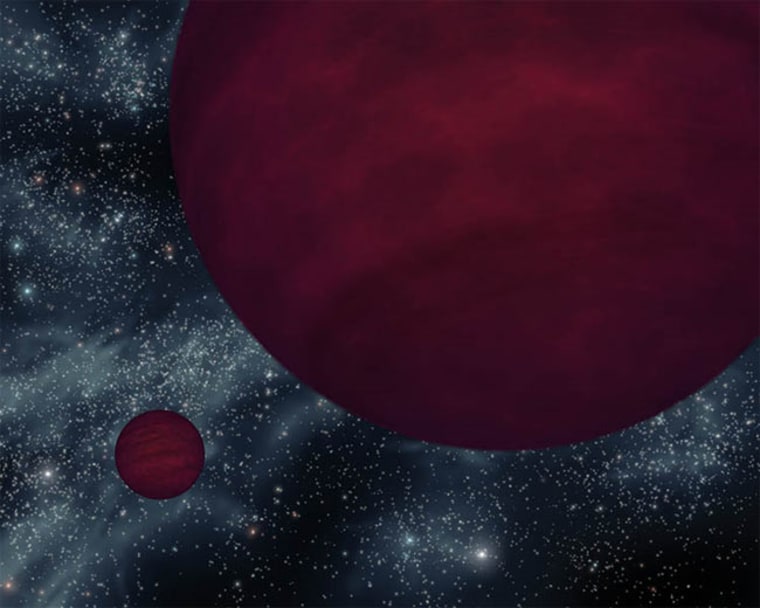A pair of failed stars takes the record of being the dimmest bulbs ever detected, astronomers find.
Each of the substellar objects, called brown dwarfs, is one million times fainter than the sun in total light on the electromagnetic spectrum, and at least one billion times fainter in visible light alone.
A brown dwarf is a compact ball of gas floating freely in space that's too cool and lightweight to generate the thermonuclear fusion that powers real stars, but too warm and massive to be considered a planet.
"These brown dwarfs are the lowest-power stellar light bulbs in the sky that we know of," said lead researcher Adam Burgasser, a physicist at MIT.
The findings were published in the Astrophysical Journal Letters on Dec. 10.
Until now, astronomers thought this dim duo was a single, faint brown dwarf. Past research has shown the object is the fifth closest known brown dwarf to us, 17 light-years away toward the constellation Antlia. One light-year is the distance light will travel in a year, or about 6 trillion miles (10 trillion kilometers).
Slideshow 12 photos
Month in Space: January 2014
Here's how the team found the singlet was actually twins: They observed the object in infrared light using NASA's Spitzer Space Telescope. The data showed that what was still thought to be a single object had a warm atmospheric temperature of 560 to 680 degrees Fahrenheit (293 to 360 degrees Celsius). While this is hundreds of degrees hotter than Jupiter, it's still downright cold as far as stars go.
In fact, the brown dwarfs, called 2MASS J09393548-2448279, or 2M 0939 for short, are among the coldest brown dwarfs measured so far.
They also estimated the brightness, which they found to be twice what would be expected for a brown dwarf with its particular temperature. The solution: The object must have twice the surface area. So each body shines only half as bright, and each has a mass of 30 to 40 times that of Jupiter.
Burgasser said that studying these objects could help astronomers understand details of brown dwarf structure and evolution.
The work was funded in part by a NASA grant.

